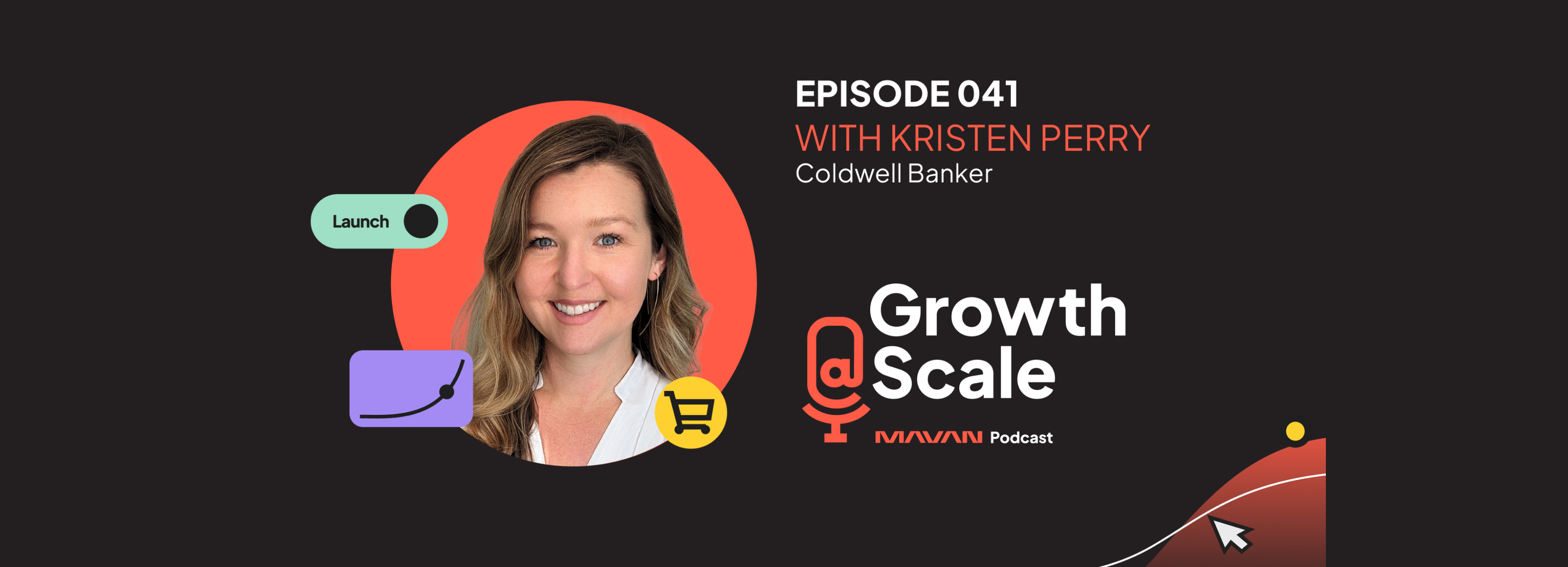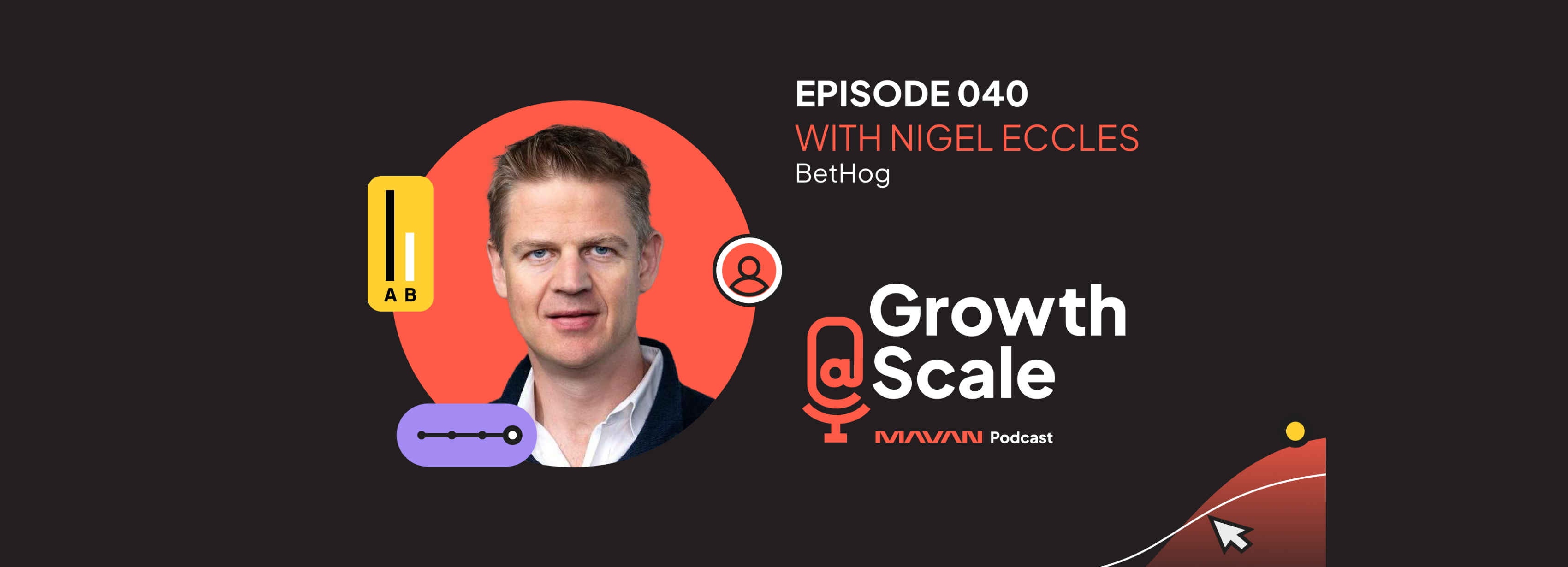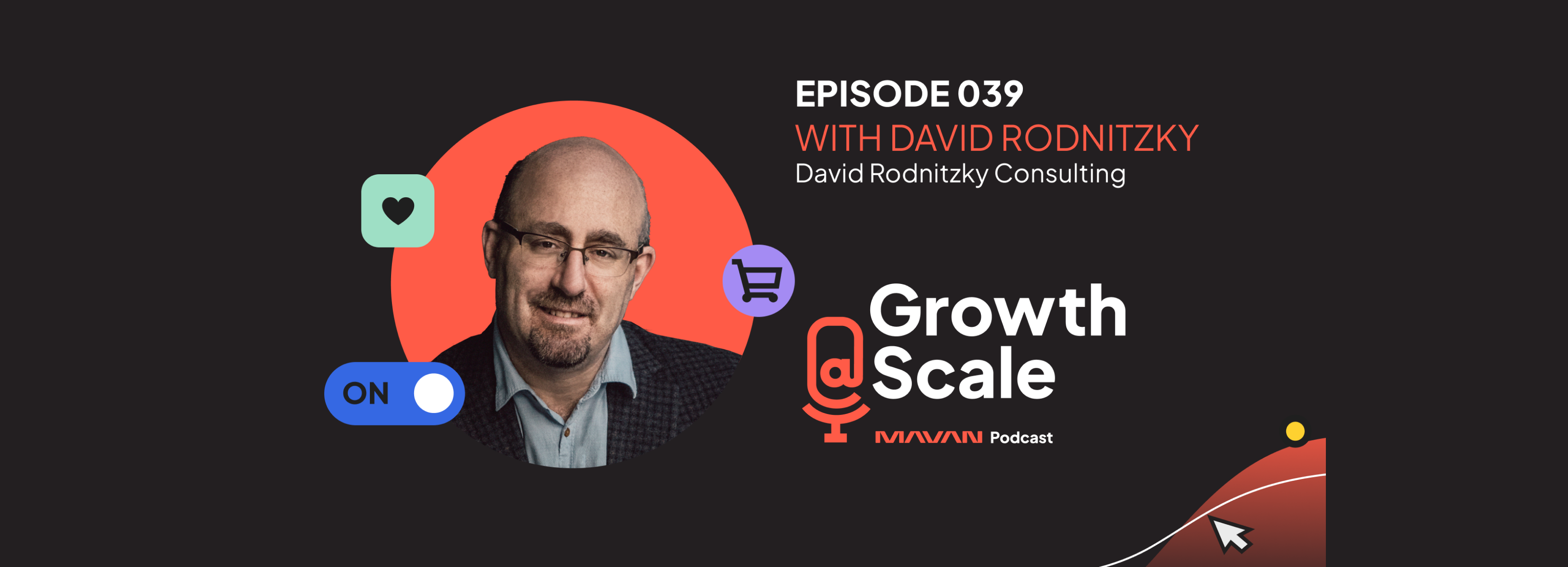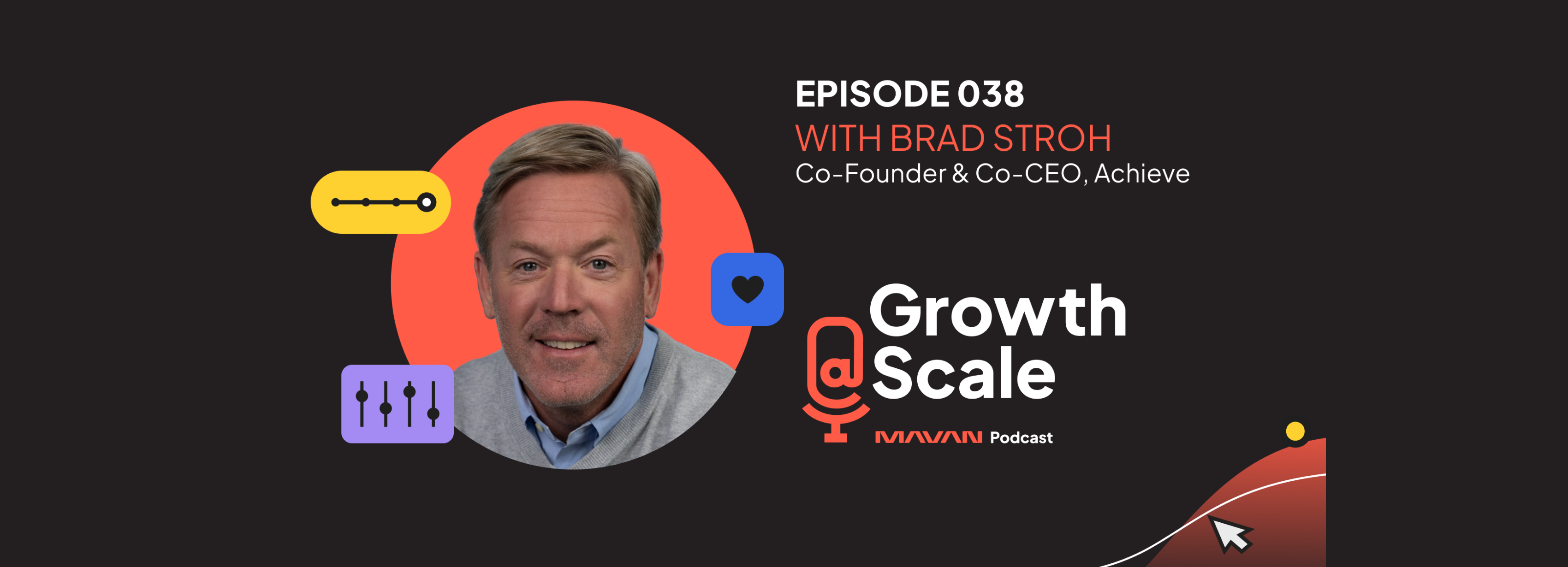Growth@Scale – Episode 11 – Ed Lee
Matt Widdoes
Welcome to Growth at Scale. I'm your host, Matt Widdoes. This is a podcast for leaders who want to bring sustainable, predictable, scalable growth to their businesses. Every episode I sit down with world -class growth experts across product, marketing, finance, operations, you name it. The hope is that these conversations will give you real, actionable advice for building and sustaining company growth. We're joined today by Ed Lee for a chat about attracting users. Ed and I talk about finding the right audience, letting creative drive your success, and how to avoid pitfalls that come with massive acquisition tactics. We are interviewing on this podcast a number of different people from various functions in growth. Oftentimes, people think of growth as user acquisition or media buying specifically. Some of our listeners are going to be less familiar with user acquisition than the two of us. Could you break down, what is user acquisition generally? How would you describe that at Thanksgiving to a family member?
Ed Lee
The term growth in user acquisition has become such a big umbrella term. I think it only gets more confusing year over year. To me, user acquisition and growth is just how you acquire and bring users into the product or company through paid or unpaid initiatives. That's the most simplistic way of thinking about how do we grow and build our business? How do we have more customers?
Matt Widdoes
As you think about growth and UA generally, or maybe I should say growth generally, what makes a great growth program, particularly as it relates to paid media?
Ed Lee
There's so much that you could do. Really, you want to focus down and figure out where your audiences live and exist on both the mobile ecosystem and the non -digital ecosystem. It's really about finding strategies of how you can get in front of your core audiences and building on that. that through small incremental steps. You're not trying to just go and blanket out your campaigns on Facebook or Google and hope for the best. You really want to get down and dirty to the small nuances and then build a complex growth strategy based on the data and experiments that you're running from there.
Matt Widdoes
Cool. We think a lot about the right person with the right skills at the right time for the right amount of time. As you think through the earliest days, startups that have just raised less than a million dollars all the way through series D, how does this function change over time? What does the shape of the team and the needs of the business typically look like as companies progress through that?
Ed Lee
Yeah. So even before getting to what does it look like progressing, I'd say the core backbone of all this is that everybody needs to put on their science coat on. and really experiment and not be discouraged by failing more than they will succeed and to constantly iterate and think about hyper -focused experimentation. This is especially the case at an earlier stage company where you really have no idea of what's gonna happen and what you're gonna see. And so you need to be able to kind of weather the failures there earlier and start looking for areas of opportunity. Those areas of opportunity could just be like really small wins, even a small Facebook campaign that might have a higher than average CTR. That's a good signal point for you to start digging a little bit deeper on, branching out, layering up, and then really expanding and going forward. I think for earlier stage companies, it's all about that experimentation. It's more about quantity than quality at times that I found, and as you get to a larger stage of your growth, business, and strategy, it shifts from quantity to quality, and you kind of have all your historical experiences, your learnings, how do you leverage that to reduce the failure rate to be able to not effectively throw away money when you're testing but have efficient capital spend, even if it may be a failed test, you're at least learning. And from that, you can build a strategy and playbook for you to really expand on every single channel, exploring new opportunities, think about audiences, the holistic growth strategy outside of just paid UA as well.
Matt Widdoes
I think it's a great point, and I think it's often overlooked that in user acquisition and in growth broadly, it really requires, I think what I've seen at the best companies that I've worked with is you've got multiple specialists in various departments working in unison with a single purpose and a clear strategy and sharing data equally, sharing kind of responsibility and ownership. What are kind of the various teams that go into growth? How do you kind of work between those other teams? Again, with a focus on paid, but what are the... What are some of the other kind of supporting actors in a healthy and functional growth org?
Ed Lee
Yeah, I'd say growth nowadays is probably the most cross -functional organization and team of any startup or even established company right now. And I say that because in my experience, I touch almost every single team across the entire company. There's so much that we could learn from. See, the biggest stakeholders that we interact with are the creative brand and design team. We work very closely also with the data science and analytics teams to ensure we understand and make business decisions quickly and effectively. We work very closely with the product because we're out there marketing the product. We need to know who we're talking about. We need to know who we're going after, how to talk to them, their pain points, their needs, the challenges, et cetera. And we work very closely with sales as well. And for us, sales, I'd say, is a bit of a blend of all organizations, especially a partnership with finance. from the B2C world actually, where we need to understand what are the Union Economics, what's kind of the subscription renewal rates, how do users and cohorts look like based on the acquisition that we bring in and the user base that we're going after. And we work very closely with all of them in Unison. We really need to figure out how do we talk to our customers? How do we get them into the product and make them successful? And then once they're successful, how do we get them to bring their friends over, bring their mom, dad, best friend all into the app so that we can continue to grow this not outside of just the paid side, but also the organic side too?
Matt Widdoes
How do you think about, often times people kind of separate these two things. How do you think about product -driven growth teams or just marketing -driven growth teams? I tend to kind of lump them into one thing and it's actually like neither one or the other, but I've met with CEOs whose attitude is, well, we're not a marketing -driven or we're product -driven. Do you have a separation between those two? How do you view those broadly?
Ed Lee
Yeah, I would generally agree with you that they should be joined at the hip and the same. Now, what I want to caveat here is that companies will maybe start product -driven, then eventually need marketing -driven work and vice versa. Every company is different, their product is different and their audience is different. So as a result, the stages can come in different places and times of the product lifecycle, but at the end of the day, the most successful companies and businesses have a unified joint strategy that is both product and marketing -driven. Without marketing, your users are not coming through the door. You might be a very lucky product that has a very strong organic and viral growth, maybe like a Google, but even Google is doing marketing, right? They have a fully robust and big marketing division that is spending lots of time and energy to grow their products. They're not immune to this as well, so why should any of us be?
Matt Widdoes
What are some of the most common questions you get asked? I'm curious. This is either from senior leadership for other people when they say, oh, you know about this and that, What are some of the most common questions you've heard lately?
Ed Lee
Yeah, the one question I always get asked is, how much money should we be spending on this? And I love that question because I always tell them, I'm not sure, but based on our data, here is a test plan of phased approaches with incremental spend budget for us to validate what we can get out of this and the learnings that we can have. And I think that's a big hurdle and mental concept that a lot of senior leadership who don't have a marketing background struggle with. And some of that is, it's real money that we're spending, right? This is not funny money that we're actually spending. Some of these tests require $50 ,000 to $100 ,000 for us to go and spend that. But as long as you have kind of the milestones and check -ins in place, you can mitigate some of that risk, right? A $100 ,000 test might be able to be assessed at the 10 to 20K level. And so it doesn't require the full budget, but you know the amount of money that you have to spend on any given channel or experiment is Truly arbitrary. It really depends on how many conversions are you getting how comfortable do you feel at that data? You could do some math and Assessment of what that might look like but at the end of the day, you don't know what you don't know You'll have to kind of run some of that and see how it goes and iterate from there going forward.
Matt Widdoes
Any other kind of questions that come up frequent?
Ed Lee
Yeah, how do you build a strong? Creative team think a lot of companies and senior leaders come to me and say we don't know what we're doing on creative We aren't able to find any new winners. We've tried working with XYZ agency And we don't know what we're doing right now and we know it's important, but we don't know what to do and That's a fair question. It's a very complex problem. It's a multi -stage multi -faceted issue that you know is often overlooked a lot of people might come and say well creative like that's so easy to do it just Hire some designers and some copywriters and you know We can go go test as many images and things that you want and the reality is is that each one is an investment That you have to produce and craft similar to channel testing every creative that you put out there You want to be learning from that but putting out a creative is really difficult You have to hire the right people the right team the right way to analyze build a test structure and format to make sure that You're getting learnings and not just testing for the sake of testing either
Matt Widdoes
Now how do you think about that? I mean, I think that's such a big piece and we talk a lot about it here from top to bottom What are some of the things that teams can do particularly earlier stage to kind of more readily optimize or improve that process? Any any thoughts or comments there?
Ed Lee
So it's expected that you're gonna have the duds You're gonna have those failures, but you want to get to a point where you're actually learning from the failures and you're not those mistakes again, right? And so, duds to me, if done right, are not truly losses. They are learning opportunities that will help inform kind of the next iteration of what we're trying to work on and do. And so, you know, the things that I always anchor on are, of the things that are working, let's dissect it, let's build a modular format that we can then go and create it versus creating 20 different random ideas. I think random ideas here and there are pretty effective, if done right, in a tasteful way to make sure you kind of push your creative team to think outside of the box. But really, let's take your biggest, most successful winner. Disect the hook, dissect the middle part, change the copy, change the color coding, change the format of things, change how you end it, mix and match with different creatives, build from there to kind of ladder up and have incremental learnings that, even though they are duds, you're learning from them. And even though they may not be kind of the grand slam home run that you're looking for, it will still stabilize your campaigns and extend the half -life of your campaign through an extended period of time to make sure that you have more runway to test more creatives. There's a lot of things that you can do that people often overlook. In my previous team, we would overlook copy to be truthfully honest. And when we started testing our hook and a three -word headline, we saw a really meaningful impact, like 20% lift on just changing the copy. And here we were building brand new creatives and iterating and doing all these complex, fancy things. And sometimes you just don't need to be that overly complex with it.
Matt Widdoes
Ed, thank you so much for joining us today. Look forward to the next time.
Ed Lee
Thanks, Matt. It was fun.
Matt Widdoes
That was Ed Lee with a great chat about all things user acquisition. Thanks for listening to Growth at Scale. Check back soon for more chats about growth. Find more episodes, conversations and blogs at maven .com. See you next time.




